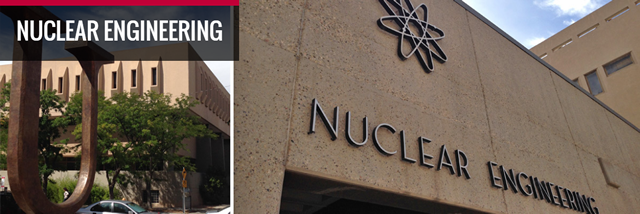
Nuclear Engineering ETDs
Publication Date
7-31-1970
Abstract
Particle-loaded materials are sometimes used for radiation shielding. In many cases shielding calculations, performed with the assumption of a homogeneous medium having the appropriate ratio of particle-to-matrix material, are grossly inadequate. The exact distribution of particles within such materials is probabilistic in nature, and, therefore quantities, such as the transmitted flux, become random variables. To reasonably evaluate the effectiveness of this type shielding, one must obtain the expected values and corresponding standard deviations of those quantities of interest.
In this dissertation, two models of a particle-loaded shield are investigated. The first is an artificial material postulated to consist of constant-thickness slabs of infinite lateral extent, which are called "particles", randomly embedded in a matrix material. Precise analytic results are obtained for the case in which particle and matrix are pure absorbers. The second is a more realistic model, consisting of constant radius spheres randomly embedded in a matrix material. A precise treatment of this model is extremely difficult; hence, the author examines two approximate schemes which are advantageous from a computational standpoint. The first approximate scheme has the characteristic that, in the limit of low volume-percent loadings, it approaches the rigorous solution. The second approximate scheme, valid when the first scheme is inadequate, provides a useful method of evaluating the behavior of highly loaded materials. Again, both particles and matrix are taken to be pure absorbers. The sphere-loaded problem is investigated by employing Monte Carlo procedures to simultaneously construct transport particle histories and the structure of the medium encountered during these histories.
For the pure absorption problem, it is found in both of the above models that for shields which are very thin relative to particle dimensions, the average transmission initially decreases in agreement with the homogeneous shield assumption. As the shield thickness increases, however, the average transmission can depart very quickly from the behavior one would calculate by assuming the shield to be a homogeneous mixture of particle and matrix material.
This departure asymptotically results in an exponential behavior governed by an effective constant cross section which is characteristic of the loaded shield and which is lower than the cross section associated with the homogeneous assumption. It is also observed that for the pure absorption problem, the behavior of the expected value of higher moments of the transmission is no more difficult to obtain than the first moment.
Calculational results are presented and are found to compare favorably with the limited amount of available experimental data. The extension of the developed computational techniques to transport problems which include scattering is then outlined. In the final chapter, the author discusses the implication of his results upon both experimental and additional theoretical work on transport theory in realistic particle-loaded media.
Sponsors
Sandia Laboratories
Document Type
Dissertation
Language
English
Degree Name
Nuclear Engineering
Level of Degree
Doctoral
Department Name
Nuclear Engineering
First Committee Member (Chair)
Douglas O'Dell
Second Committee Member
G. Milton Wing
Third Committee Member
James H. Renken
Fourth Committee Member
Richard L. Coats
Recommended Citation
Scrivner, Gary J.. "Transport Calculations in Particle-Loaded Media." (1970). https://digitalrepository.unm.edu/ne_etds/91
